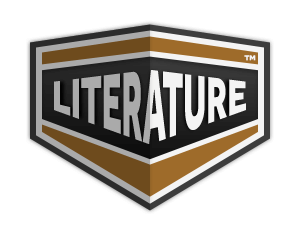The Star-Spangled Banner
"The Star-Spangled Banner" by Elizabeth Gordon is a children's book that explores the historical significance and cultural impact of the United States' national anthem. Through engaging illustrations and accessible text, it tells the story of Francis Scott Key's experience during the War of 1812, emphasizing themes of courage, patriotism, and resilience. The narrative also highlights the anthem's enduring legacy and its role in American identity, making it a captivating read for young audiences learning about their nation's history.
The boy named Billy came running into the house one morning, full of the joy of living and singing at the top of his voice, “O, long may the star-spangled banner still wave, o’er the land of the free-ee and the home of the brave.” “Get a step-ladder, Billy. You’ll never reach that ‘land of the free’ any other way,” advised Big Sister. “Well, say,” said Billy grinning, “I’m not a prima donna; it takes a real voice to climb up there. I love it, but I wish there were not so many high places in it. Francis Scott Key never thought of me when he wrote it, that’s sure.” “Francis Scott Key hadn’t a thing to do with it, silly-Billy,” said Big Sister. “How do you learn your history anyhow?” “Well, Somebody, please tell me who did write it then?” asked Billy. “That’s what teacher said anyway.” “Perhaps it was not made quite clear to you, Billy Boy, that the words only were written by Francis Scott Key. You’re not alone in wishing that it was not quite so difficult; when I come to that high note I always stand on tiptoe and I’ve never struck it yet, and nine out of ten people have the same difficulty; yet I love it, as we all do. “As to who really wrote it there seems to be no clear record, some crediting it to Dr. Samuel Arnold, an Englishman, but others claim it for John Stafford Smith, who made it over from an old French composition. Anyway, it was used as a popular song in England for some years and was used in other ways also. “In 1798 it was used by Robert Treat Paine in a political way, for a song called ‘Adams and Liberty.’ “Everyone knows how the words came to be written. It was in the Summer of 1814 when we were at war with England; the British under General Ross appeared in the vicinity of Washington and after overcoming feeble resistance took the capital and set fire to the White House and some other public buildings. The President and the Cabinet fled, while pretty Dolly Madison bundled up the most precious White House treasures, including Washington’s picture and the original draft of the Declaration of Independence and carried them to safety. Then the British prepared to bombard Baltimore from the sea and attack it from the land side. Francis Scott Key was sent with a friend to the British Fleet to get a prisoner of war. As the British were about to attack the town and the Fort he was not allowed to return, and you may imagine how anxiously he watched for the dawn to come and with what joy, when the mists rolled away that he beheld the starry banner still flying from the fort. With the tears of thankfulness streaming down his cheeks he wrote the first stanza of his now world-famous song and later in the day, when he had returned to the city, he finished the poem. “It was first printed under the name of ‘The Bombardment of Fort McHenry,’ in the Baltimore American and immediately became very popular.” “It’s a great song,” said the boy named Billy, “but I think almost anyone could have written a great song under those conditions--if he could write at all.” “Yes indeed,” agreed Somebody.
Translation
Translate and read this book in other languages:
Select another language:
- - Select -
- 简体中文 (Chinese - Simplified)
- 繁體中文 (Chinese - Traditional)
- Español (Spanish)
- Esperanto (Esperanto)
- 日本語 (Japanese)
- Português (Portuguese)
- Deutsch (German)
- العربية (Arabic)
- Français (French)
- Русский (Russian)
- ಕನ್ನಡ (Kannada)
- 한국어 (Korean)
- עברית (Hebrew)
- Gaeilge (Irish)
- Українська (Ukrainian)
- اردو (Urdu)
- Magyar (Hungarian)
- मानक हिन्दी (Hindi)
- Indonesia (Indonesian)
- Italiano (Italian)
- தமிழ் (Tamil)
- Türkçe (Turkish)
- తెలుగు (Telugu)
- ภาษาไทย (Thai)
- Tiếng Việt (Vietnamese)
- Čeština (Czech)
- Polski (Polish)
- Bahasa Indonesia (Indonesian)
- Românește (Romanian)
- Nederlands (Dutch)
- Ελληνικά (Greek)
- Latinum (Latin)
- Svenska (Swedish)
- Dansk (Danish)
- Suomi (Finnish)
- فارسی (Persian)
- ייִדיש (Yiddish)
- հայերեն (Armenian)
- Norsk (Norwegian)
- English (English)
Citation
Use the citation below to add this book to your bibliography:
Style:MLAChicagoAPA
"The Star-Spangled Banner Books." Literature.com. STANDS4 LLC, 2025. Web. 21 Feb. 2025. <https://www.literature.com/book/the_star-spangled_banner_5175>.








Discuss this The Star-Spangled Banner book with the community:
Report Comment
We're doing our best to make sure our content is useful, accurate and safe.
If by any chance you spot an inappropriate comment while navigating through our website please use this form to let us know, and we'll take care of it shortly.
Attachment
You need to be logged in to favorite.
Log In